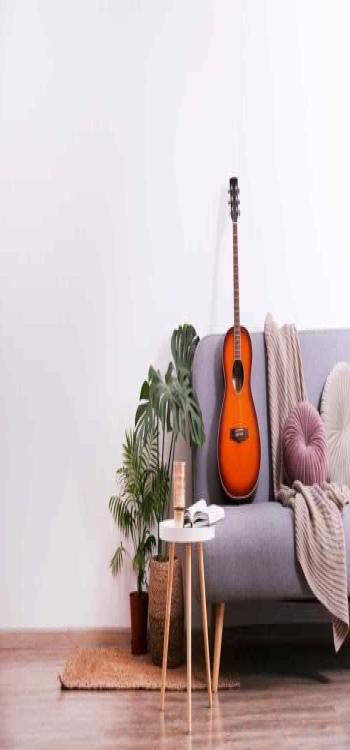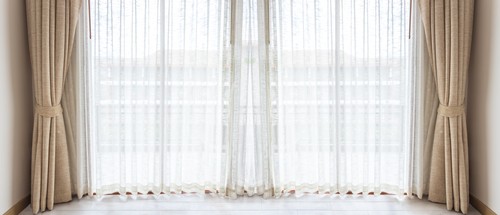Table of Contents
Quality Service Guarantee Or Painting Free

Get a rental agreement with doorstep delivery

Find the BEST deals and get unbelievable DISCOUNTS directly from builders!

5-Star rated painters, premium paints and services at the BEST PRICES!
Loved what you read? Share it with others!


Submit the Form to Unlock the Best Deals Today
Help us assist you better
Check Your Eligibility Instantly

Experience The NoBrokerHood Difference!
Set up a demo for the entire community
Creating the Ultimate Music Space: Tips and Ideas for Music Room Design
Table of Contents
A dedicated music room can be a wonderful addition to any home. It's a space where you can practice, perform, and listen to music in an environment that is specifically designed for those purposes. But designing a music room can be a challenge, especially if you're not sure where to start.
In this blog post, we'll provide tips and ideas for designing the perfect music room for your home, including considerations for size and layout, acoustics, furniture and equipment, and personal touches.
Whether you're an avid musician or just enjoy listening to music, we've got you covered. So, let's dive in and start creating the ultimate music space.
Quality Service Guarantee Or Painting Free

Get a rental agreement with doorstep delivery

Find the BEST deals and get unbelievable DISCOUNTS directly from builders!

5-Star rated painters, premium paints and services at the BEST PRICES!
Why You Need a Music Room

A music room gives you a place to fully embrace your passion and become the musician you've always wanted to be.
If you're serious about music, you need a dedicated space to rock out and practice your craft. No more disturbing your roommates or family members with loud noises and endless scales.
Plus, you can trick it out with all the gear and equipment you need to take your skills to the next level. Trust me, you won't regret investing in a space that lets you fully embrace your musical side. So go ahead and dedicate a room to your musical pursuits – your art (and your neighbours) will thank you.
Benefits of Designing a Music Room for Your Home
A music room in your home can give you a place to practice, perform, and listen to music without being interrupted.
Here are the top benefits of having a dedicated music room in your home–
1. Convenience: With a music room in your home, you will have easy access to your instruments and recording equipment at all times, which can be especially useful for musicians who are working on a tight schedule.
2. Creativity: A music room can provide a creative space that is free from distractions, allowing you to focus on your music and channel your creativity.
3. Cost-effectiveness: If you are a gigging musician, building or designing a music room in your home can be more cost-effective than renting a studio or practice space.
Having a music room in your house can also give you a place to listen to music or play an instrument for your own pleasure.
How to Design Your Music Room: Step-by-Step Process

In this section, we will walk you through the various stages of designing your music room.
Step 1: Identifying the Purpose of your Music Room (Practice, Performance or Listening?)
Will it be primarily used for practice, performance, or listening to music? Each of these purposes will inform the design and layout of the room.
Music Practise Room
If the main reason for having a music room is to practice, the space should be made to fit the instruments and equipment that are needed for individual or group practice. This could include soundproofing to keep noise from getting in the way, good lighting and airflow, and a place to store instruments and music stands.
This could include soundproofing to keep noise from getting in the way, good lighting and airflow, and a place to store instruments and music stands. It is critical to consider acoustics and the placement of instruments and equipment to ensure that sound is distributed evenly throughout the room.
Music Performance Room
If the music room will be used for performances, then the design should take into account the needs of the performers and the audience.
This may include a small stage, seating for the audience, and proper lighting and sound equipment. The acoustics of the room will also be important to ensure that the music is clear and balanced for both the performers and the audience.
Music Listening Room
If your music room setup is to be used primarily for listening, then the focus should be on creating a comfortable and relaxing atmosphere.
This may include comfortable seating, good lighting, and a high-quality sound system. It's also important to consider the placement of speakers and other equipment to ensure that the sound is evenly distributed throughout the room.
Overall, it's important to carefully consider the purpose of the music room to design a space that meets the needs of its intended use.
Step 2: Determining the Size and Layout of your Music Room
There are several factors to consider when determining the size and layout of your music room. Here are some steps you can follow to help you decide on the best size and layout for your needs
Consider the space
You'll need to measure the dimensions of the room to determine how much space you have to work with. Take into account any furniture, equipment, or other items that may be in the room, and consider how much space you'll need to move around comfortably.
Think about the type of music you'll be playing
If you're planning on playing loud, amplified music, you'll need a larger space to accommodate the sound. On the other hand, if you're playing more intimate, acoustic music, you may be able to get away with a smaller music room design.
Decide on the layout
Think about how you'll be using the space and what type of equipment you'll need. Will you be playing alone, or will you have a group of musicians with you? Will you need a separate area for recording? Consider these factors when deciding on the layout of your music room.
Acoustic of the Room
The acoustics of a room can greatly affect the sound of the music being played. If you're concerned about the acoustics of your space, you may want to consider adding sound-absorbing materials to the walls, ceiling, and floor.
Step 3: Music Room Acoustic Design—5 Things you must take care of to ensure pristine sound quality.
Poor acoustics can negatively impact the sound of the music being played, while good acoustics can enhance the overall listening experience. Here are some design considerations to keep in mind when designing a music room for your home–
Room shape and size
The shape and size of a room can greatly affect its acoustics. Larger rooms tend to have better acoustics, as sound waves have more space to travel and disperse. Rectangular or square rooms are generally better for acoustics than oddly shaped or narrow rooms.
Wall Surfaces
Hard, flat surfaces like glass or concrete can create an echo or reverberation in a room, which can be distracting or unpleasant. Soft surfaces like fabric, carpets, and padded walls can help absorb sound and improve the acoustics of a room.
Ceiling Height
High ceilings can help improve the acoustics of a room, as sound waves have more space to disperse. Low ceilings can create an echo or reverberation, which can be distracting or unpleasant.
Furniture and Decor
The type and arrangement of furniture and decor in the music room can also affect acoustics. Large, soft pieces of furniture like couches and beanbags can help absorb sound and improve the acoustics of a room. Hard, reflective surfaces like tables and mirrors can create an echo or reverberation.
Soundproofing
If you're concerned about sound spilling into other rooms or areas of your home, you may want to consider soundproofing your music room.
This can be done through the use of soundproofing materials on the walls, ceiling, and floor. By considering these design elements, you can create a music room with good acoustics and sound quality that will enhance the overall listening experience.
Step 4: Choosing the Right Furniture and Equipment
The right furniture and equipment are essential for creating a comfortable and functional space. Here are some tips to consider–
Essential Furniture and Equipment for Practice and Performance Spaces
For a music room that is used for practice and performance, some essential pieces of furniture and equipment to consider include–
- adjustable chairs or stools for sitting at an instrument or computer
- music stands for holding sheet music or electronic devices
- An amplifier or PA system for amplifying instruments or vocals
- A microphone stands for recording or performing
- Speakers or headphones for listening to music
Tips for Designing a Comfortable and Inviting Listening Room
If you are setting up a music room that is primarily used for listening to music, you may want to consider adding some additional elements to create a more comfortable and inviting space. Some ideas to consider for your music room include–
- Comfortable seating such as a couch or armchair
- A coffee table or other surface for holding drinks and snacks
- Soft lighting, such as floor lamps or table lamps, create a relaxing atmosphere
- Decorative elements such as artwork or plants add visual interest
Storage solutions for your music collection
No matter what type of music room you are setting up, it's important to have adequate storage solutions for your music collection. Some options to consider include–
- Bookshelves or storage cabinets for holding CDs, records, or other physical media
- A media cabinet or stand for holding a turntable or other audio equipment
- Wall-mounted shelves or racks for displaying instruments or other music-related items
- Bins or boxes for organizing smaller items such as sheet music or picks
Step 5: Decorate Your Music Room [8 Home Music Studio Design Ideas]
Decorating your music room can be a fun and creative process that allows you to personalize the space and make it your own. Here are some ideas for decorating your music room–
1. Display Your Musical Instruments

Here’s an amazing design idea for your music room’s wall– You can display your musical instruments and add a personal touch to your music room and make it feel like your own.
Hang your guitars on the wall using guitar hangers, or display your piano in a prominent location, such as in front of a window.
This not only adds character to your space but also allows you to easily access your instruments when it's time to practice or perform.
2. Add Music-themed Art

Adding music-themed art, such as vintage album covers or framed sheet music, can give your music room a unique and personal touch. You can mix and match different pieces to create a gallery wall, or choose a few statement pieces to hang on their own. This is a great way to show off your love of music and add character to your space.
3. Incorporate Music-themed Decor

Incorporating music-themed decors, such as music note pillows or a drum lamp, can add a fun and functional touch to your music room. These types of decorative items can serve as conversation starters and add a touch of whimsy to your space.
Plus, they can be used to add pops of colour or tie in with the overall theme of your music room. You can give Industrial Decor a shot, as it is a common music studio room design choice.
4. Use Colourful Accents

Using colourful accents, such as throw pillows, curtains, or rugs, can add pops of colour to your music room and make it feel more vibrant and livelier. Choose colours that complement the overall theme of your space and add a touch of personality.
5. Add Plants and Wooden Elements to your Music Room

Incorporating natural elements, such as plants or wood accents, can bring a sense of warmth and relaxation to your music room. Plants can help purify the air and add a touch of life to your space, while wood accents can add texture and warmth.
6. Comfortable Seating

Making sure you have plenty of comfortable seating options, such as couches or armchairs, is essential for relaxing and listening to music. Choose seating that is both comfortable and stylish, and consider adding throw pillows or blankets for added comfort.
7. Sound Absorbing Materials for the Room

Installing sound-absorbing materials, such as curtains or rugs, can help improve the acoustics of your music room and make it easier to hear and practice music. These materials can help absorb sound waves and reduce echoes, resulting in a more pleasant and acoustic-friendly space.
8. Storage Space

Adding storage solutions, such as shelving or record cabinets, can help you keep your music organized and easily accessible. This is especially important if you have a large collection of CDs or vinyl records, and it can help keep your music room looking clean and clutter-free.
Designing a music room can be a fun and rewarding project. It's important to consider acoustics, lighting, and furniture when creating the perfect space for making music.
The most important aspect of any music room is to make it a comfortable and inspiring space that allows you to fully express your creative side. So don't be afraid to let your personality shine through in your design choices.
If you need help in realising your vision for the music room, consider reaching out to NoBroker Interior Designers for professional assistance.

FAQ's
There are several ways to soundproof a bedroom music studio, including using heavy curtains or blinds on windows, adding insulation to walls, using rugs and carpets on the floor, and adding weatherstripping around doors.
If you have enough budget you can even consider soundproofing your music room.
If you are designing a small bedroom music studio, it's important to make the most of the space you have.
This can be done by using multi-functional equipment and furniture, such as a desk that can be used for both production and storage, and by using vertical space for shelving or hanging equipment. You can also use rugs and other soft materials to help absorb sound and create a more comfortable and acoustically friendly environment.
A colour theme for your music room will personalize the space and make it your own.
Consider your style and interests–Do you have a favourite band or musician? If so, you could incorporate elements of their style or aesthetic into your music room. Another option is to choose a colour scheme that reflects your personality or mood.
Soft, neutral colours can create a calming atmosphere, while bright and bold colours can add energy and personality to the space.
You can even consider incorporating patterns or textures into your design through the use of wallpaper, murals, or textured paint. Ultimately, the most important thing is to choose a theme or colour scheme that makes you feel comfortable and inspires creativity.
Here are some popular music room accessories that you can consider–
Wall art or musical instrument wall hangings–can add a decorative touch to your music room and serve as a conversation starter for visitors.
Rugs–can add warmth and comfort to a music room, as well as help define different areas of the space.
Lamps or lighting fixtures–Proper lighting is important in a music room, as it can help with the mood of the room.
Two common approaches that you can use are–
Hanging instruments on walls
Designated racks for your instruments.
These two choices are useful for guitars and other smaller instruments.
In the case of tablas and other instruments, you can place them on well-lit platforms that add to the visual appeal of the instruments.
Recommended Reading

5 Tips on How to Choose Curtains 2025
January 31, 2025
2496+ views

Best Ways to Improve the Lighting in Home
January 31, 2025
2493+ views

DIY Magical Lighting Ideas: Step by Step Guide
January 31, 2025
2397+ views

January 31, 2025
2486+ views

How to Create the Perfect Reading Nook
January 31, 2025
2107+ views
Loved what you read? Share it with others!
NoBroker Interiors Design Testimonials
Most Viewed Articles

Top Hanging Light Ideas to Illuminate Your House
January 31, 2025
393222+ views

GFRG Panels - A New Technology in Building Construction
January 31, 2025
257420+ views

15 Wall-Mounted Dining Table Design Ideas
January 31, 2025
103649+ views

How Mivan Construction Technology Is Transforming the Art of Building!
January 31, 2025
62515+ views

Best 3 Bedroom House Plan: Modern and Space-Efficient Layouts for 2025
January 31, 2025
36550+ views
Recent blogs in
Butterfly Painting as per Vastu Shastra: Remedies, Directions, and Feng Shui Tips in 2025
February 5, 2025 by Anda Warner
20 Latest Wardrobe Inside Design for Ladies: Maximize Your Space and Style in 2025
February 5, 2025 by NoBroker.com
5 Tips on How to Choose Curtains 2025
January 31, 2025 by NoBroker.com
Best Ways to Improve the Lighting in Home
January 31, 2025 by NoBroker.com
DIY Magical Lighting Ideas: Step by Step Guide
January 31, 2025 by NoBroker.com




Join the conversation!